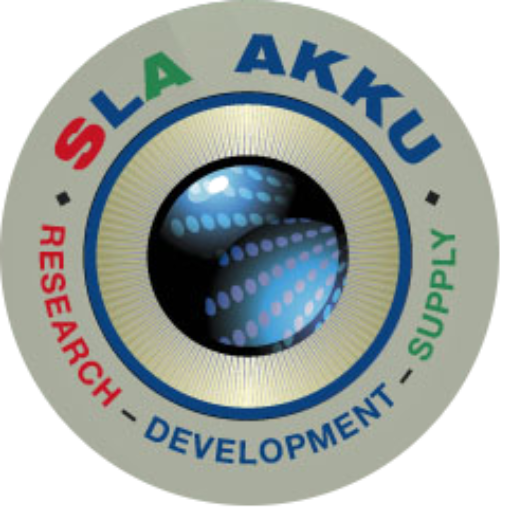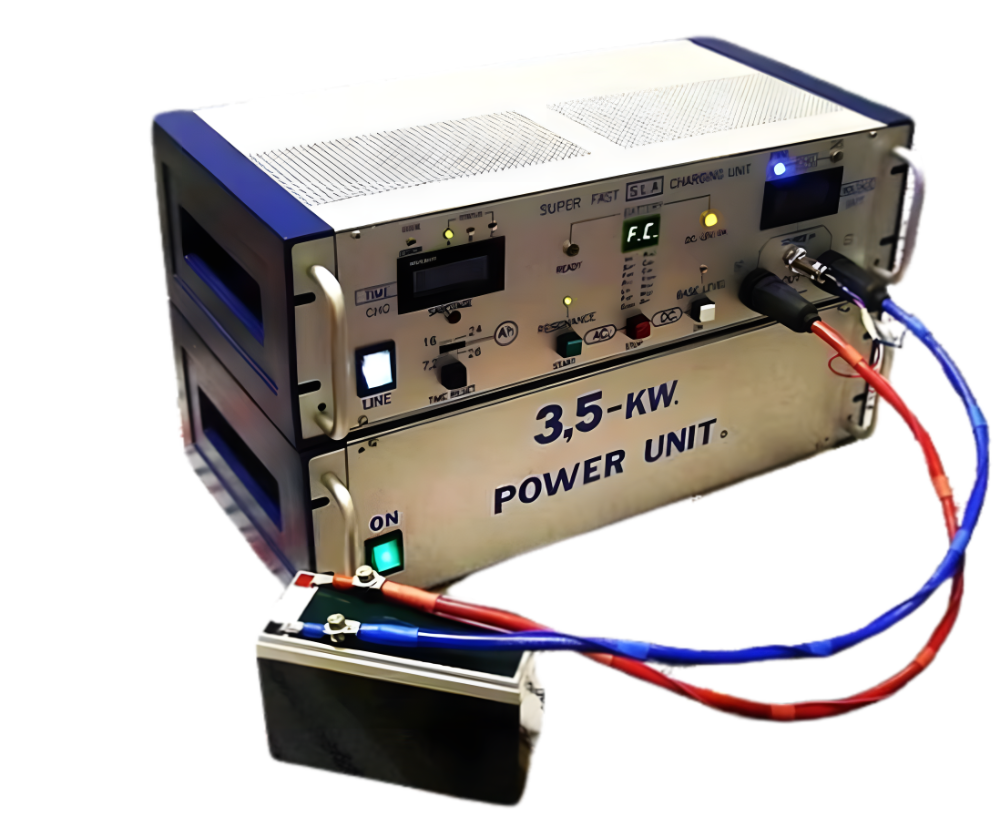
Fast charging of sealed, maintenance-free, water-based batteries from 0-point to 100% charge level, regulated by electronics, with alternating current (AC)
In 15 – 20 minutes
We respectfully encourage all interested parties to attend a personal demonstration, where you are welcome to bring your own specialists, measuring equipment, own batteries, test equipment and even your own power sources.
The world’s only AC characteristic battery fast charging method
Compatible battery types and quick charging times
Lithium based
20 minutes
Sealed Lead-Acid
15 minutes
NiCd, NiMH
20 minutes
Compatible battery types and quick charging times
Lithium based
20 min
Sealed Lead-Acid
15 min
NiCd, NiMH
20 min
Alternate Impedance Orientated Charge
Introducing the World’s Only AC Characteristic Fast Charger
After years of rigorous research and development, our company is proud to unveil a revolutionary device designed to charge sealed, maintenance-free batteries. This breakthrough is at the forefront of charging technology and sets a new standard for efficiency and reliability.
Our research is laying the groundwork for future technologies, enabling the widespread adoption of variable impedance charging (proton exchange). It’s not just innovative, it’s versatile, ready to revolutionise charging applications in a wide range of environments.
Our charging solution is uniquely adaptable. It represents not just a step, but a quantum leap in charging technology, offering unparalleled flexibility and performance.
Experience the future of fast, efficient and versatile battery charging with our cutting-edge solution.

To achieve fast charging, the charging system must be capable of supplying a current that is four times the battery’s capacity (4C).
This allows for very rapid charging but requires a robust and high-capacity charging infrastructure.
The new charging method does not damage but rather doubles (at minimum) the lifespan of the batteries (charging cycle count)!
Mass production of electric vehicles will never be possible without 100% charging in a short time.
Patented on January 16, 2014. Hungarian Patent Office entitled “Procedure and/or switching arrangement for fast charging of batteries with bound electrolyte”. Registration number: 229590
Patented on January 16, 2014. Hungarian Patent Office entitled “Procedure and/or switching arrangement for fast charging of batteries with bound electrolyte”. Registration number: 229590
The most beneficial effects are achieved by the AC type proton exchange fast charger system as follows

1. The conversion to chemical energy works on a different principle than DC (molecular drift) charging.
2. Batteries are charged by variable impedance oriented AC (proton exchange) charging.
3. The conversion of the electrical energy input during charging into chemical energy is achieved by an AC current with a DC voltage and a DC frequency.
4. using DFRA, PWM, Power Factory Control.
There are many claims made about 30 minute DC fast charging. However, one very important piece of data is missing from all these statements. Namely, how many fast charge cycles (30 minutes DC) the battery packs can withstand.
The type of battery we use (LiFePO4) is less than half the price of many batteries in use today.
Number of fast charge cycles without quality degradation, with LiFePO4 battery
Over
Cycles
For bicycles, scooters, wheelchairs, etc., 220V mains supply is sufficient for fast charging
To achieve fast charging, the charging system must be capable of supplying a current that is four times the battery’s capacity (4C)
Comparison of ordinary DC charging and our AC type quick charging
Ordinary DC
AC type
Charging time to 100% level:
At least 6-8 h
Charging time to real 100% level:
SLA – 15 min ; NiCd, NiMH, LiFePO4 – 20 min
The higher charging current or pulse used to reduce the charging time puts a lot of strain on the battery structure. Significantly higher wear rate
The charging time is independent of the battery A/h value!
The superpositive alternating charging current, which is several orders of magnitude higher than the conventional one, does not damage the battery structure due to the effect described
High heat generation due to molecular drift, leading to increased oxidation and therefore wear
The quantity of the plumb-sulfate doesn’t increase during the time of usage, and it can recombine by charging
Battery wear and tear is increasing
It definitely slows down the wear and tear of the batteries
The number of charging cycles is limited. (data given by the manufacturer) It could decrease with the charging method if it uses a higher charging current than 3.5C
If AC charging is used continuously, the charge cycle increases significantly compared to the factory data
The amount of energy that can be taken out of the battery gradually decreases (A / h value)
The amount of energy that can be drawn from the battery is not reduced. (Initially increases).
The amount of energy that can be extracted from the battery is maintained after 2700 battery discharge cycles, for LiFePO4 battery type.
The transfer of energy required for charging occurs continuously during the charging time, so in most cases the normal network is sufficient
The transfer of power for charging takes up to 20 minutes.
For higher A/h batteries, an industrial network is therefore required.
To achieve fast charging, the charging system must be capable of supplying a current that is four times the battery’s capacity (4C)
Demonstration video (short version)
In this demonstration video we show the discharging and fast charging of a 12V 20Ah LiFePO4 battery.
The full, uncut video can be downloaded here: Download video (2 hours long, 2.38GB file size)
Contact us
Please note that we are not in the business of selling products
